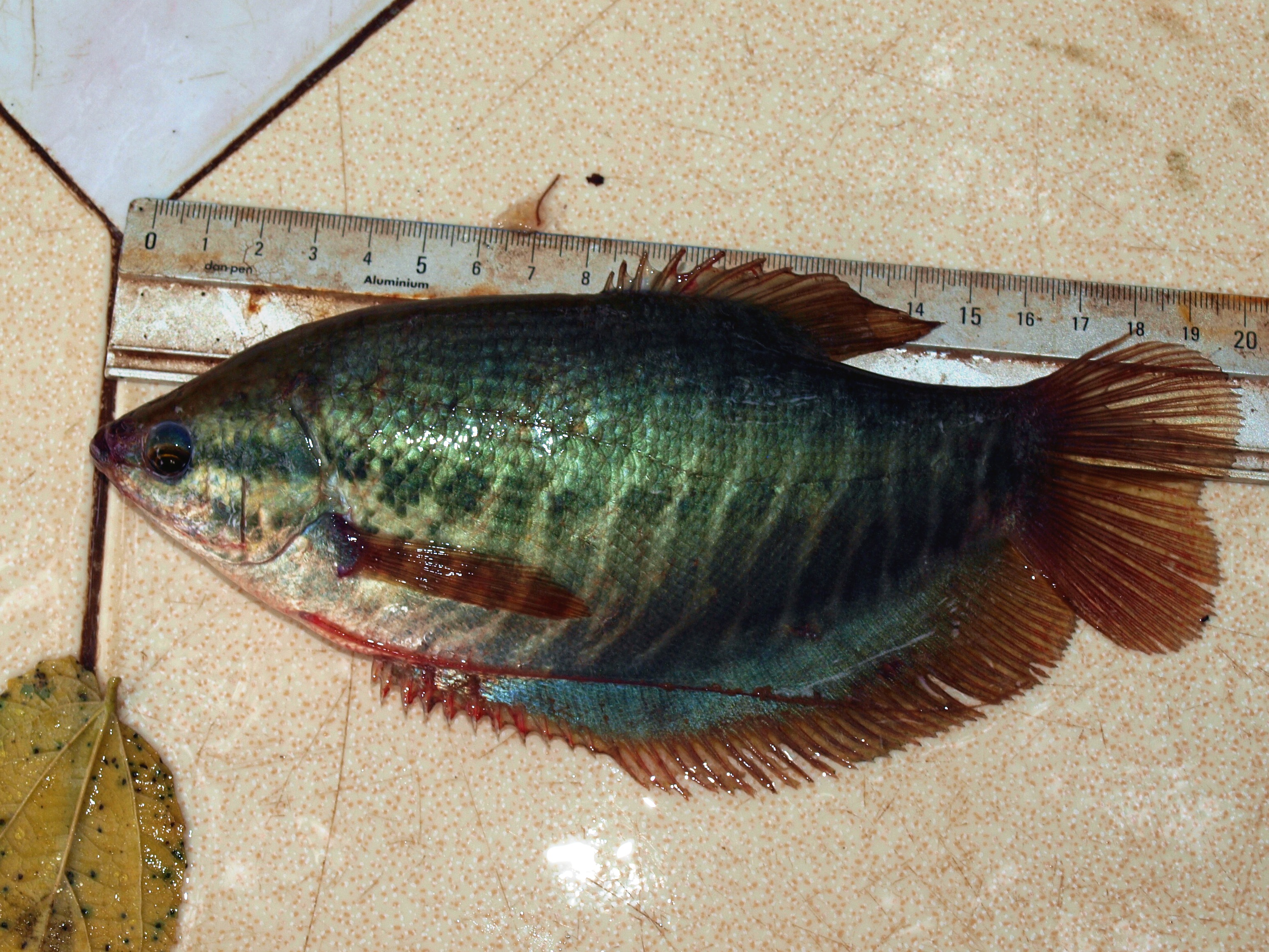That title sounds like the set up to a punchline, but actually it’s the set up for many experiments on fish that are commonly farmed in tanks. Many studies have found that some fish species grow better or stay healthier in different colors of tanks, but some species show no differences no matter which color they are raised in. Most fish species that are farmed can perceive color, so the color of their environment could play a large role in stress levels and visual activities, like finding food.
You might predict that fish do best in a color that resembles their wild habitat, like blue for open water fish or green for lake fish. However, this is not always the case. The first known research into this subject goes back to 1938, when researchers found that mosquitofish raised in black tanks were more vulnerable to infection. In the wild, these fish prefer dark backgrounds, so this was the first sign that tank color preference is a more complex subject than it initially appears.
To identify potential patterns in good versus bad tank colors, Ewen McLean at Aqua Cognoscenti, LLC compiled all the studies about the effects of tank color on fish health and growth that he could find. Some families of fish prefer specific colors, but it mostly appears to vary by species, so to figure out the benefits of different tank colors, you’d have to study every species individually.
Complicating things further, it also varies by life stage. Juveniles sometimes grow better in different colored tanks than the adults of the same species. In general, dark tanks are better for larval fish who have to chase and capture tiny live prey, and the dark background makes it easier to see them. When looking broadly at all the larval species studied, black is the most commonly preferred, followed by no preference for color, and then blue. Blue and white were more preferred by adult fish, but many species also had no preference.
The most easily identifiable effects of tank color are on the external color and pattern of the fish. Olive flounder (pictured above) is a fish species that is often sold whole. Sometimes, olive flounder have dark spots on their white bellies, which is seen as a negative quality compared to fish with all white bellies. Researchers found that raising olive flounder in white tanks reduced the amount of this undesirable pigmentation. So, it’s possible that flounder farmers would want to use white tanks to produce the most marketable fish. Tank color is also very important in culturing ornamental fish. The snakeskin gourami is a colorful fish that only exhibits the ideal skin color when it is raised in blue tanks. Having ideal skin color can raise a gourami’s value from $10 USD to $22 USD per fish, making tank color an easy decision for these producers.
Putting some species in certain colored tanks led to an increased level of cortisol, which is the hormone used to measure stress in animals. This can lead to negative effects including reduced growth and higher aggression. Cortisol can also have some positive effects, such as causing salmon to mature earlier, thereby reducing the time it takes to get them to market size.
On the negative side, light color tanks in general increase aggression in salmon and trout, making them vulnerable to infection and injury. Aggressive behavior also redirects energy from growth to running away or chasing other fish. Chronic stress can also affect how the fish’s genes are expressed, and these changes can be passed down to their offspring. This means that fish could pass down reduced growth and reproductive potential just because they were put in the wrong color tank.
For future research into the effects of tank color, scientists should use a standardized color scale to describe their tank, because people perceive color slightly differently. They should also measure water clarity, since cloudy water can make it harder for the fish to perceive the tank color in the first place. The studies examined in this review also generally only measured stress at one moment in time, which leaves some questions unanswered. For example, do the fish stay stressed or do they get used to the color? There are lots of future studies to be done that could benefit producers and consumers alike!




